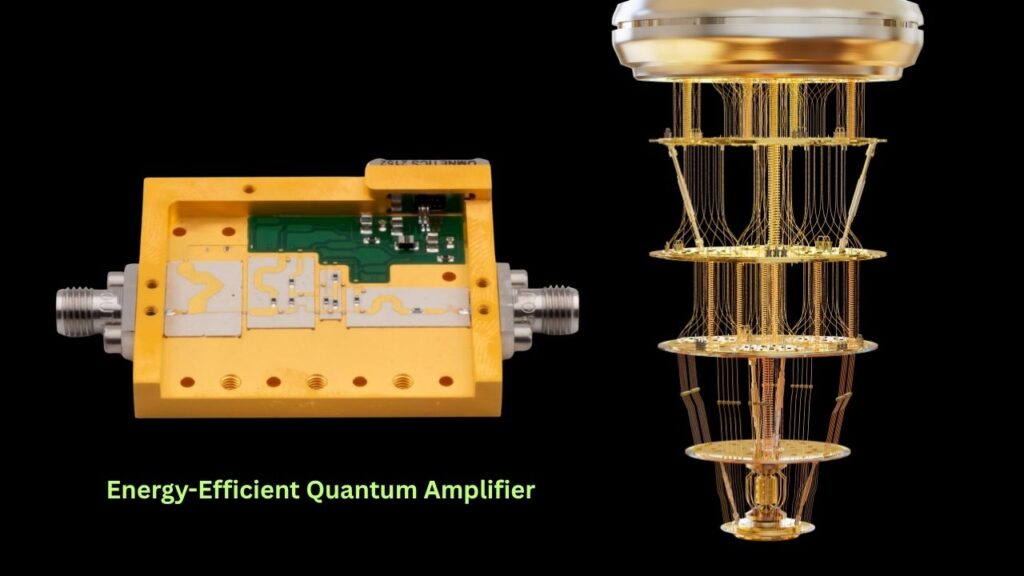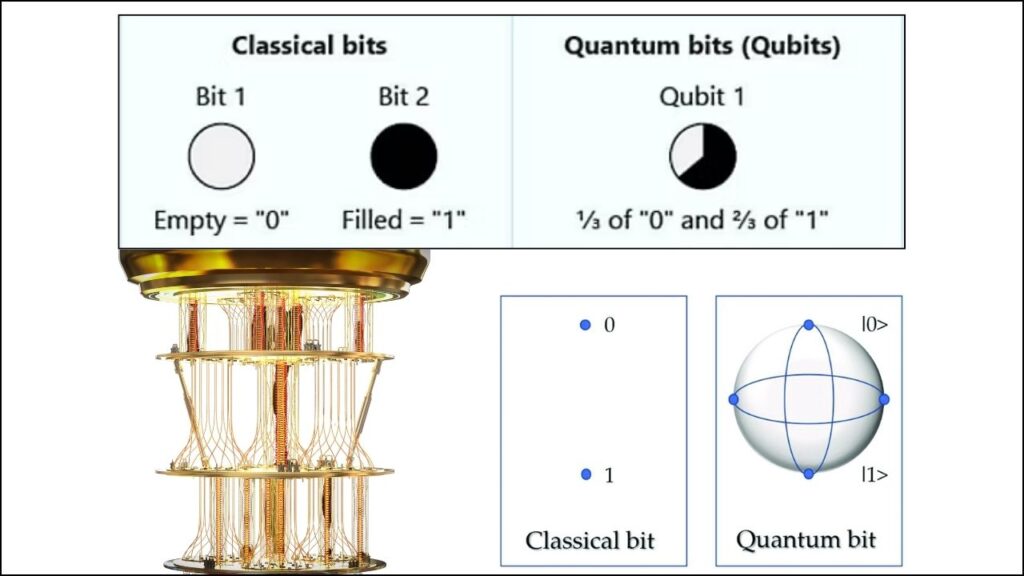Energy-Efficient Quantum Amplifier: Quantum computing is on the brink of revolutionizing industries—from drug development and encryption to artificial intelligence and logistics. But as these powerful machines grow, one persistent challenge stands in the way: how to read the delicate signals from quantum bits, or qubits, without causing them to lose their special quantum properties. Enter the latest breakthrough: an energy-efficient quantum amplifier that dramatically cuts power consumption without sacrificing performance.

This article will walk you through what this innovation means, why it matters, and how it could shape the future of quantum technology. Whether you’re a curious student, a tech enthusiast, or a professional in the field, you’ll find practical insights, clear explanations, and expert-backed facts.
Energy-Efficient Quantum Amplifier
| Feature/Fact | Details & Data |
|---|---|
| Breakthrough | Quantum amplifier uses 90% less power, with no loss in sensitivity or performance |
| Developer | Chalmers University of Technology, Sweden |
| How It Works | Activates only during qubit readout (pulse-driven), not continuously |
| Impact on Quantum Computers | Enables more qubits, reduces heat and decoherence, boosts scalability |
| Activation Speed | Responds in just 35 nanoseconds |
| Potential Efficiency Boost | Quantum computers could become up to 10× more energy efficient |
| Official Source | Wallenberg Centre for Quantum Technology (WACQT) |
The development of an energy-efficient quantum amplifier without loss in performance marks a pivotal moment in quantum technology. By slashing power consumption by 90% and maintaining top-tier sensitivity, this innovation removes a major hurdle in scaling quantum computers. Whether you’re a student, researcher, or industry leader, this breakthrough opens new doors for practical, powerful quantum machines that could transform our world.
What Is a Quantum Amplifier and Why Does It Matter?
Understanding Qubits and Quantum Computers

Traditional computers use bits—tiny switches that are either on (1) or off (0). Quantum computers use qubits, which can be both 1 and 0 at the same time, thanks to a phenomenon called superposition. This means a quantum computer with just 20 qubits can represent over a million different states at once, making it incredibly powerful for certain complex problems.
The Role of Amplifiers
To use a quantum computer, scientists need to read the information stored in the qubits. This is done using microwave amplifiers that boost the very weak signals coming from the qubits so they can be measured. However, amplifiers also create heat and electrical noise, which can disturb the qubits and make them lose their quantum state—a problem known as decoherence.
The Breakthrough: Smarter, Cooler, Faster Quantum Amplifiers
How the New Amplifier Works
- Pulse-Driven Operation:
Unlike traditional amplifiers that are always on, the new amplifier only activates when it needs to read a qubit. This “pulse-driven” design means it uses energy only when necessary, drastically reducing overall power consumption. - Ultra-Low Power Consumption:
The amplifier uses just one-tenth the power of the best amplifiers available today—a 90% reduction. This slashes the amount of heat generated, which is crucial for keeping qubits stable. - No Loss in Performance:
Despite using less power, the amplifier is just as sensitive and accurate as its more power-hungry predecessors. It can detect the faintest signals from qubits without adding extra noise or errors. - Lightning-Fast Response:
Thanks to smart algorithms and genetic programming, the amplifier can respond to a qubit pulse in just 35 nanoseconds. This ensures it’s always ready when needed, without wasting energy.
Why This Matters for Quantum Computing

As quantum computers scale up to thousands or even millions of qubits, the number of amplifiers needed grows, too. More amplifiers mean more heat and more risk of decoherence. The new energy-efficient amplifier solves this bottleneck, making it possible to build larger, more powerful quantum computers that stay cool and stable.
Practical Advice: What This Means for Industry and Research
For Quantum Computer Developers
- Scalability:
With amplifiers that use less power and generate less heat, you can increase the number of qubits without worrying about system instability or excessive cooling costs. - Accuracy:
Improved readout fidelity means fewer errors in quantum calculations, which is essential for practical applications in cryptography, materials science, and more.
For Students and Early-Career Professionals
- Skill Development:
Understanding the basics of quantum mechanics, electronics, and signal processing is more important than ever. These skills will be in high demand as quantum technology moves from the lab to real-world applications. - Career Opportunities:
The Wallenberg Centre for Quantum Technology (WACQT) and similar initiatives are actively seeking researchers, engineers, and students interested in quantum technology. Programs like industrial PhDs and postdocs are available for those looking to make an impact in this field.
For Tech Enthusiasts and the Public
- Broader Impact:
More efficient quantum computers could one day revolutionize everything from climate modeling to personalized medicine. Keeping up with these advances helps you stay ahead in a rapidly changing world.
Step-by-Step Guide: How the New Quantum Amplifier Works
Step 1: Detecting a Qubit Signal
When a quantum computer needs to read a qubit, it sends a tiny microwave pulse. The amplifier’s job is to catch this faint signal and make it strong enough to measure.
Step 2: Pulse-Driven Activation
Instead of staying on all the time, the new amplifier “wakes up” only when it detects a qubit pulse. This is like turning on a flashlight only when you need to see in the dark, instead of leaving it on all day.
Step 3: Smart Control Algorithms
The amplifier uses advanced algorithms (including genetic programming) to ensure it activates quickly—within just 35 nanoseconds—so it never misses a signal.
Step 4: Accurate, Low-Noise Amplification
Even with such fast, on-demand activation, the amplifier boosts the signal without adding extra noise or errors. This ensures the quantum computer gets a clear, accurate reading of the qubit’s state.
Step 5: Energy Savings and Heat Reduction
By only using power when necessary, the amplifier dramatically reduces the overall energy used by the quantum computer. Less energy means less heat, which helps keep the qubits stable and extends the life of the system.
Real-World Example: Why This Is a Game-Changer
Imagine a future where quantum computers help scientists discover new medicines in days, not years, or break codes that today’s computers can’t touch. But to get there, we need machines with thousands—or even millions—of qubits. Without energy-efficient amplifiers, the heat and noise from all those amplifiers would make such machines impossible to build.
With the new amplifier, each qubit can be read accurately without adding to the system’s heat load. This makes truly large-scale, practical quantum computers a real possibility for the first time.
Cobalt-Based Catalyst Offers an Effective Alternative to Precious Metals
Researchers Identify a Previously Unknown Type of Molecular Movement
Researchers Discover New Method to Stabilize Ultra-Thin Materials for Next-Gen Electronics
FAQs About Energy-Efficient Quantum Amplifier
What is a quantum amplifier?
A quantum amplifier is a device that boosts the tiny signals from qubits so they can be measured accurately. It’s essential for reading quantum information without disturbing the qubits.
Why is energy efficiency important in quantum computing?
Quantum computers are very sensitive to heat and noise. Energy-efficient amplifiers reduce the risk of decoherence, which can ruin quantum calculations, and make it possible to build larger, more powerful machines.
How does the new amplifier work differently from traditional ones?
Traditional amplifiers are always on, using energy and generating heat even when not needed. The new amplifier only activates during qubit readout, saving energy and reducing heat.
Will this technology be available for commercial quantum computers soon?
The research is still in the early stages, but it’s a major step toward commercial, large-scale quantum computers. Institutions like Chalmers University and WACQT are leading the way in bringing these innovations to market.






